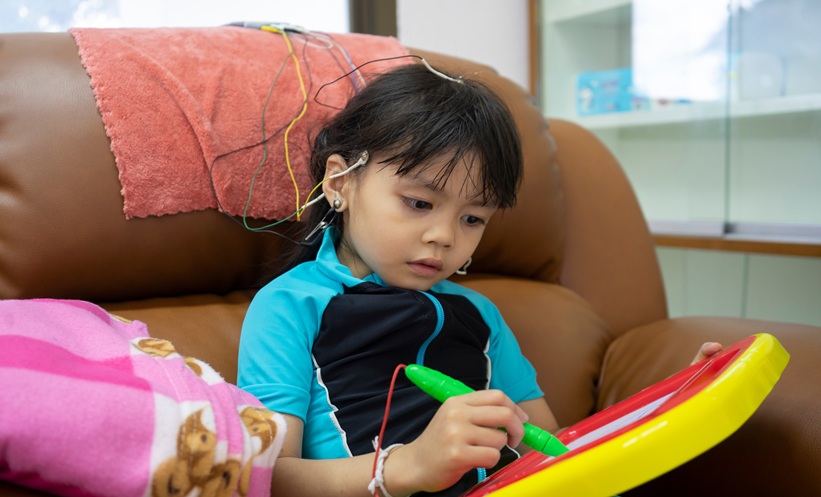László Csiba | DE Clinical Centre (DEKK), Health Service Units, Neurology Clinic, University of Debrecen, Hungary
Citation: EMJ Neurol. 2023; DOI/10.33590/emjneurol/10304165. https://doi.org/10.33590/emjneurol/10304165.
![]()
What led you to follow a career in neurology?
After graduation, I was going to be a neurosurgeon, but my mentor, Molnár, suggested I change my mind, so I became a neurologist instead. Molnár also supported me in the next period of my life, and managing grants for me.
Your personal education and professional experience have involved travelling to numerous destinations such as Germany, Japan, and France. Where do you believe you gained the most experience and do you believe travelling was important for you to achieve what you have today?
At the Max-Planck Institute, Cologne, Germany, I performed animal experiments and elaborated a new imaging method of focal cerebral ischaemia, which was published. I also developed a new focal brain ischaemia model on rats. In Cologne, I became friends with a Japanese neurosurgeon, who invited me to Kure City, near Hiroshima, Japan, where I stayed for approximately 1 year to demonstrate the experimental methods I developed in Germany. On the other hand, I knew a new non-invasive, neurosonological diagnostic device: the transcranial Doppler ultrasound (TCD). After Japan, I spent 6 months in Toulouse, France, and performed haemodynamic studies on patients with stroke-risk using single photon emission CT. Returning to Debrecen, Hungary, I invested a lot of energy to establish the first neurosonological laboratory in Hungary and founded the Hungarian Neurosonological Society. My enthusiastic team started not only the diagnostic but also the research work using ultrasound methods and clinicopathological observations.
How does your involvement as a serving member on numerous editorial boards contribute to increased awareness of cerebral circulation disorders and neurosonology?
My research team in Debrecen was so successful that I was elected as the Executive Committee of the European Society of Neurosonology and Cerebral Hemodynamics (ESNCH), and 10 years later as President of the society. Hungary is located between East and West; therefore, I consciously elaborated scientific and clinical collaborations with German (Münster, Giessen), Israeli (Tel-Aviv), Romanian, Serbian, Croatian, and Ukrainian colleagues. We hosted numerous Japanese, Dutch, Israeli, and German colleagues (e.g., Ritter, Schulte-Altedorneburg, Toyota, Nishi, etc.) who spent months in Debrecen performing clinicopathological observations, experimental investigations, and neurosonological studies. My department was also very active in postgraduate teaching, both by the European Federation of Neurological Societies (EFNS), now the European Academy of Neurology (EAN), and in the European Stroke Organisation (ESO). I was the Chair of the European Cooperating Committee of the EFNS for years. The relatively underpaid young neurologists in the Eastern and Middle-European countries could not participate in expensive Western conferences; therefore, we invented the system of regional teaching courses in Odessa, Ukraine; Bucharest, Romania; Târgu Mureș, Romania; Belgrade, Serbia; Uzhgorod, Ukraine; Lviv, Ukraine; etc. The students did not come to the teachers, but the teachers travelled to them. In practice, professors of western neurological departments, including Hacke, Diener, Bornstein, Kalvach, Brainin, and Ringelstein, travelled to the Eastern and Middle European countries to teach the young neurologists on postgraduate courses, with the financial support of the EFNS.
My mentor, Molnár, recognised the outstanding importance of stroke in Eastern European countries due to many vascular risk factors, insufficient healthcare, and unhealthy healthy lifestyle, and established the second Cerebrovascular Stroke Unit in Europe in 1969. As I took over the directorship of the Department of Neurology in Debrecen (1992, aged 40 years), I continued his pioneer efforts collected during my scholarship in Japan, France, and Germany. A modern stroke care system has been built up in Debrecen with a catchment area of 0.5 mi. The patients are transferred directly from their home to the CT after prenotification of the CT laboratory. CT angiography, perfusion CT, and MRI help the correct diagnosis. A board-specified neurologist is present in the department 24/7, in person, and they investigate the stroke patients in the CT laboratory, analyse the results of imaging and lab results, and decide about intravenous or mechanical thrombectomy. The intensive care unit is a part of the Neurology and Cardiology department, which are in the same building. The close cooperation with cardiologists, the availability of a high-quality laboratory, and the CT, MRI, and PET improve our diagnostic accuracy. In 2022, we performed 184 intravenous lyses and 120 mechanical thrombectomies. I think the Széchenyi Price, donated me by the President of the Republic, is the acknowledgement of the self-sacrificing work of my team. Our complex activity, which includes education, clinical work, and research, is never a ’one man show’, but the effort of a good team.
You were awarded the Széchenyi Prize in 2020. Can you highlight the breakthrough moments in your academic and research career that led to this outstanding award?
The efficient graduate and postgraduate education of the neurological disorders is of critical importance. The university years provide only a short and superficial insight into neurological disorders; therefore, my coworkers (Kovács and Bencs) and I produced two types of multimedia presentations and films (in English) for young neurology residents.
The first type involved typical or unusual neurological cases, with their history, laboratory findings, imaging, differential diagnosis, outcome, and sometimes autopsy. We have dozens of them. The second type was a multimedia presentation of common acute neurological diseases such as headache and vertigo through video demonstration of a true patient (with informed consent) from admission until discharge, including case history, neurological status, and instrumental investigations. Then, the epidemiology, differential diagnosis, and evidence-based therapeutic options of the disease are discussed, and the outcome is shown. Finally, we summarise the tasks of the family physician, including follow-up and secondary prevention, and suggest literature for further information and guidelines. This second type of material focuses on the detailed introduction of a disease, rather than a single case, and is therefore useful for medical students or residents who do not have much experience. Recently, I offered the numerous Type 1 and Type 2 teaching materials to EAN for use by its young members.
Where are the current literature gaps within the field of cerebral circulation disorders and neurosonology?
Neurosonology is important for stroke care from two different points of view. Diagnosing carotid stenosis, including severity, structure of the plaque, and risk of embolisation during endarterectomy or stenting is an important non-invasive screening method in stroke prevention. On the other hand, some neurological methods, such as TCD, can detect spontaneous or intervention-provoked microembolisation from heart surgery, carotid desobliteration, etc. TCD is useful in neurologic intensive care (e.g., follow-up of vasospasm after subarachnoid haemorrhage) and it is the only simple, non-invasive technique that can monitor the cerebral blood velocity changes continuously. I am very proud of our colleague Garami, who graduated from our university, learned the ultrasound in my laboratory, and continued their activity at the National Aeronautics and Space Administration (NASA), Houston, USA, instructing astronauts on how to use TCD in the space. I think neurosonology will remain an important discipline for the prevention, diagnosis, and research of stroke.
You have recently been appointed as Chair for the Local Organising Committee for EAN 2023. Could you please explain what this position involves and how it contributes to the success of the EAN?
I am the chair of the Local Organizing Committee of the EAN congress 2023 in Budapest. Conference venue, programmes, department visits, patient demonstrations, and hands-on courses all need to be managed. Budapest is an optimal location for EAN, because the city is not far from the western countries and near the eastern ones. Neurologists living in Eastern and Middle European countries (Poland, Slovakia, Ukraine, Russia, Bulgaria, Romania, etc.) can easily come to Budapest because the plane, train, and highway connections are excellent, and the city is not only beautiful, but safe and relatively cheap. There are many hotels and museums, and I strongly suggest visiting the extraordinary House of Music, which was planned by a Japanese architect, and the Museum of Fine Arts.
Can you talk about the ways in which EAN aims to be the ‘Home of Neurology’, advance high-quality patient care, and reduce the burden of neurological diseases?
We all know that the western societies are ageing. The older a society is, the more neurological diseases can be found, such as vascular disorders, dementias, and Parkinson’s disease. In my opinion, EAN has three important tasks in the future: in person and online postgraduate education, a common platform to find cooperating partners in research, and acting as catalysator to promote the evidence-based diagnosis and therapy.
What are the most exciting changes that have been made to the scientific programme for EAN 2023 compared to EAN 2022?
The use of digital technology for the early diagnosis of dementia, Parkinson’s disease, and vascular disorders. Artificial intelligence and robotic technology will increase the efficacy of the neurological diagnosis and therapy in the future. I think that the management of ‘big data’ and the use of artificial intelligence and robotic technology are the most important new features of the EAN congress 2023, as well as the new observations of neurological complications in patients post-COVID-19.
Are there any innovations on the horizon in the field of neurosonology that you think are particularly important?
In the future, we will have more reliable data about the instability of carotid plaques after analysing the ultrasound characteristics. This information has clinical importance because it helps our decision-making for endarterectomy, stenting, or conservative therapy. TCD has been a useful device for monitoring cerebral microemboli and vasospasm, as well as diagnosing Parkinson’s disease for years, but the therapeutic application of ultrasound (e.g., focused ultrasound in tremor therapy) opens a new avenue in neurosonology. The transcranial ultrasound can monitor the cerebral blood velocity/flow and its changes continuously (second-to second) after pharmacotherapy or interventions such as endarterectomy and stenting, while the MRI, CT, and PET only provide information about the status. So, this unique ability of TCD provides a bright future for the use of neurosonology in central nervous system research.







